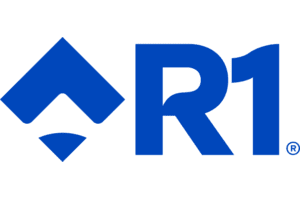SPONSORED CONTENT
A HRSA audit is not a question of if but when. Therefore, it is crucial for covered entities (CEs) to always remain audit-ready. The 340B program has become increasingly complex over the years, prompting service provider partners (partners) in the space to continuously invest in technology to automate testing and enhance compliance. CEs should leverage their valuable relationships with partners and utilize them as a resource during a HRSA audit.
Referral capture is one of the most intricate aspects of a CE’s 340B program. It is essential for CEs to understand the key elements of compliant referral capture and how partners can help ensure better compliance.
1. Patient Care Ownership
CEs must grasp the nuanced differences between encounters at a 340B-eligible location and those that establish patient care ownership. The latter is typically a subset of the former, yet CEs often conflate the two. For instance, many CEs have urgent care or walk-in clinics as 340B-eligible locations. Prescriptions from encounters at these locations are considered 340B eligible. However, for referral purposes, if a patient’s only interaction with the CE is at a walk-in clinic, CEs generally do not want to claim patient care ownership and seek referral prescriptions.
CEs must ensure they understand how partners determine patient care ownership from data feeds sent from the CE’s EMRs. Compliance checks are likely performed against encounters sent from the CE to the partner. It is important to understand how the partner parses encounters upon receipt. Should CEs only send encounters that establish patient ownership, or can the partner handle more encounters and apply filters? Which filters are available? Are they at the department, encounter type, or provider level?
HRSA Audit Tip: CEs must understand how partners identify encounters used for patient care ownership testing and how CEs can access these encounters during a HRSA audit. Such encounters should be available through the partner’s platform, reports, or both.
2. Referral Evidence
Once a CE has determined patient care ownership and can compliantly capture referral claims, the next step is identifying the data that establishes the relationship between the referring provider (at the CE) and the referred-to provider (not at CE or at a 340B ineligible location). Referral orders are typically the first consideration. However, CEs must decide which referral elements must match claim information to confidently associate a referral prescription with a referral.
HRSA Audit Tips:
- CEs must understand the information available in referral order data. Common components include the referred-from provider, location, and specialty. It may not be practical to require a match on the referred-to provider or office if such information is not typically present in EMR referral orders.
- CEs must understand insurance requirements for referral orders. If insurance does not require a referred-to provider, it may not be necessary for CEs to require a match at this level and match on specialty level is sufficient. Overly restrictive matching in the referred-to provider or referred-to office can be limiting if insurance does not require a new referral order for specialty clinic transfers.
Beyond referral orders, chart documentation can demonstrate the relationship between the CE and the specialty office. This could include acknowledgment of specialty care in CE encounter notes, specialty care details in the care team section of the EMR, or receipt of notes from the specialty clinic.
HRSA Audit Tip: CEs must be prepared to explain to HRSA why chart documentation is used to establish the relationship between the CE and the specialty office, especially if no referral order is present. Here are two examples where a referral order is not placed for a patient: A) Insurance may not always require referrals for specialty clinic visits, and B) patient may have received specialty care before becoming a patient of the CE.
3. Closing the Referral Loop with Consult Notes
Lastly, a consult note from the specialty office is essential for closing the referral loop. It demonstrates the CE’s awareness of patient care regarding medication management for the referral prescription or condition. CEs should clearly communicate to partners what elements must be present in the consult note to demonstrate this awareness. Common elements audited by HRSA include patient matching, encounter provider alignment with the prescriber of the referral claim, and specialty documentation.
HRSA Audit Tip: CEs should ensure the specialty is documented in the referral consult note. This is crucial for confirming the note’s relevance to the prescription as multiple departments at a clinic or hospital may share the same medical records department. Therefore, when partner obtains a note for one department, it is possible that they would receive a note from another department instead. Here’s an example: The provider mentioned in the note is employed at the same clinic but in a different department than the prescriber listed on the claim. It is likely that the medication referenced in the claim is also included in this note, as most visit notes typically list all medications the patient is currently taking. The key differentiator to ensure the note is related to the referral prescription is the specialty, such as cardiology for heart failure management.
In conclusion, maximizing partner support for referral capture requires a comprehensive understanding of the criteria for each CE’s patient definition. CEs should prioritize building strong relationships with their referral partners, leveraging the expertise and technology to ensure compliance and efficiency. By clearly understanding and communicating the nuances of patient care ownership, referral evidence, and consult note to close the referral loop, CEs can confidently navigate the complexities of the audit process. This ultimately will help strengthen the integrity of a CE’s 340B program and HRSA audit readiness.

Minh Hoang is the director of 340B Client Operations at R1. She can be reached at Mhoang@r1rcm.com.
Register for R1’s March 27th 12PM Webinar–Contract Pharmacy, Rebates, Transparency and Compliance

In this session, panelists will:
- Share key insights from Pharma restrictions, rebates and 340B state litigation
- Provide updates on 340B program transparency discussions
- Review recent HRSA compliance audit experience related to referral capture



